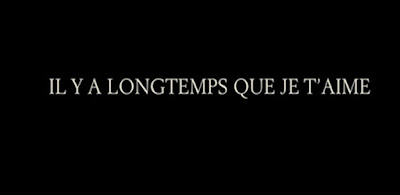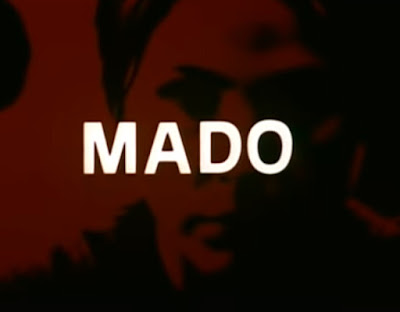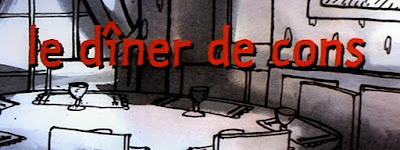In spite of the profound differences between the two films, Intouchables (directed by Éric Toledano and Olivier Nakache) kept reminding me of Eddie Murphy in Trading Places, and has at least a few similarities: something to do with a black villain turned good guy or something, I suppose. This film was inspired by a true story: the relationship between the tetraplegic Philippe Pozzo di Borgo (author of the book Le Second Souffle) and his home help Abdel Yasmin Sellou. Here, the rich Philippe (François Cluzet) and the improbable ex-con as home help Driss (Omar Sy) try to understand each other, although of course all the elements are set up here for two completely incompatible individuals just not getting on.
The reverse applies though, and both Philippe and Driss are due for an important education about other cultures and classes. At first overawed by his new situation in a house of a rich person and all the trappings that come with it, Driss takes a little time to adjust and accept the responsibility he now has, and it's not too difficult to imagine why it's been so popular in the US – black guy from the projects suddenly hoisted into an Upper East Side standard of living as a comparison, for instance.
It's not so much the cultural gap itself that's important here, but what two men from different cultures can learn from each other. Philippe comes to learn what the excitement of living on the edge can be, how soothing a few blasts from a spliff can be, how stimulating the world of popular music can be, in a word exactly how much this apparently no-hoper can teach him. And what does Driss learn, apart from the difficulties of paraplegics and how they too can enjoy a sex life, if much removed from the norm? Plus travel on a (private) plane and hang-gliding? Far, far more. At the end of his contract, Driss shows he knows what an alexandrine is, and at a glance can recognise a Dali painting, for example. Maybe on the surface not a lot, but then things can and no doubt will escalate.
Philippe and Driss are highly unusual friends, and of course the reality has been highly exaggerated. My version of the DVD has English subtitles I can't switch off, but maybe that's not such a bad thing: Georges Marchais, for instance, is mentioned in the original but his name is changed to a more recognisable (American) one in the subtitles, although I forget who. I know that when we read a book in French we're not at all reading the same book that people are reading in translation, but I'm reminded that subtitlers of films play a similar game.
Intouchables is a piece of fluff, full of completely unbelievable actions, with no pretensions to be a great film, but so what? It's still highly enjoyable cinema that doesn't insult anyone's intelligence.
The reverse applies though, and both Philippe and Driss are due for an important education about other cultures and classes. At first overawed by his new situation in a house of a rich person and all the trappings that come with it, Driss takes a little time to adjust and accept the responsibility he now has, and it's not too difficult to imagine why it's been so popular in the US – black guy from the projects suddenly hoisted into an Upper East Side standard of living as a comparison, for instance.
It's not so much the cultural gap itself that's important here, but what two men from different cultures can learn from each other. Philippe comes to learn what the excitement of living on the edge can be, how soothing a few blasts from a spliff can be, how stimulating the world of popular music can be, in a word exactly how much this apparently no-hoper can teach him. And what does Driss learn, apart from the difficulties of paraplegics and how they too can enjoy a sex life, if much removed from the norm? Plus travel on a (private) plane and hang-gliding? Far, far more. At the end of his contract, Driss shows he knows what an alexandrine is, and at a glance can recognise a Dali painting, for example. Maybe on the surface not a lot, but then things can and no doubt will escalate.
Philippe and Driss are highly unusual friends, and of course the reality has been highly exaggerated. My version of the DVD has English subtitles I can't switch off, but maybe that's not such a bad thing: Georges Marchais, for instance, is mentioned in the original but his name is changed to a more recognisable (American) one in the subtitles, although I forget who. I know that when we read a book in French we're not at all reading the same book that people are reading in translation, but I'm reminded that subtitlers of films play a similar game.
Intouchables is a piece of fluff, full of completely unbelievable actions, with no pretensions to be a great film, but so what? It's still highly enjoyable cinema that doesn't insult anyone's intelligence.
























